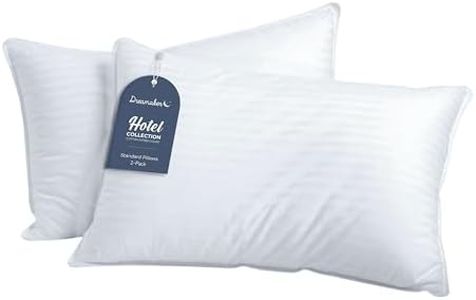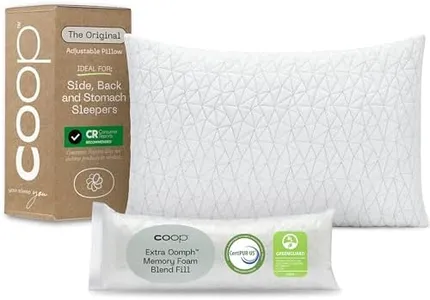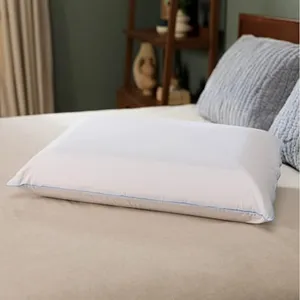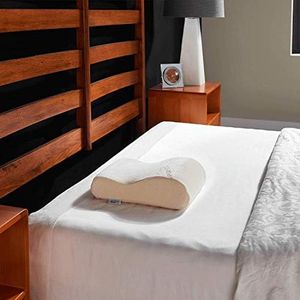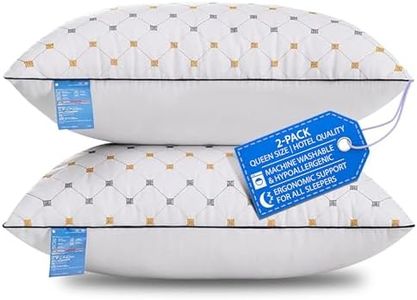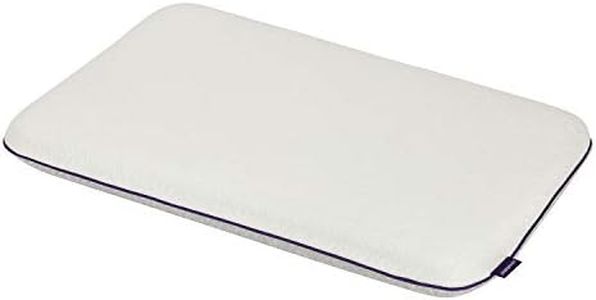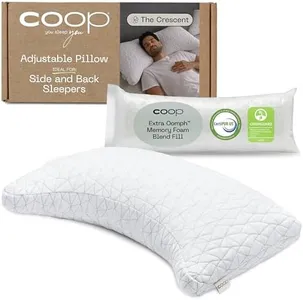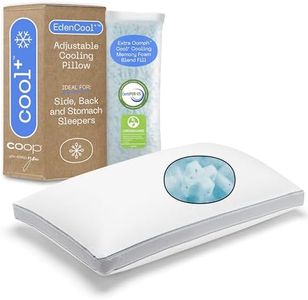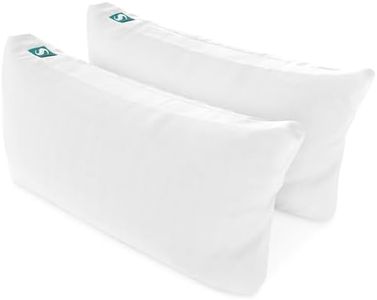We Use CookiesWe use cookies to enhance the security, performance,
functionality and for analytical and promotional activities. By continuing to browse this site you
are agreeing to our privacy policy
10 Best Hypoallergenic Pillows
From leading brands and best sellers available on the web.By clicking on a link to a third party's website, log data is shared with that third party.
Buying Guide for the Best Hypoallergenic Pillows
Choosing the right hypoallergenic pillow is a smart step if you have allergies, sensitivities, or just want a healthier sleep environment. These pillows are designed to reduce your exposure to allergens like dust mites, mold, and pet dander that often collect in regular pillows. The key is to look for features that support cleanliness and prevent allergen buildup, while also ensuring comfort that fits your personal sleep needs.MaterialThe material of a hypoallergenic pillow is central to how well it resists allergens. Common options include synthetic fibers (like polyester or memory foam), latex, and specially treated natural fills. Synthetic fills are generally resistant to dust mites and mold, making them a popular choice for allergy sufferers. Latex is naturally hypoallergenic and resists many allergens, but should be avoided if you have a latex allergy. Navigate material choices by thinking about your sensitivities: if you’re allergic to animal products, avoid down or feather; if you prefer an earth-friendly product, look for organic or natural latex. The best fit depends on your skin sensitivity, any known allergies, and personal comfort preference.
Breathability and Moisture ManagementBreathability and moisture-wicking abilities help a pillow stay dry and fresh, reducing mold growth and dust mite accumulation, both of which thrive in damp environments. Some materials, like cotton covers and latex cores, naturally promote airflow, while others may trap heat and moisture. If you tend to sweat at night or live in a humid climate, prioritize highly breathable materials. If you sleep cooler and like a plush, enclosed feel, other less breathable synthetics might be suitable. Identify what feels comfortable for you and matches your personal sleep patterns for the best choice.
Pillow Cover and EncasingA pillow's cover plays a significant role in keeping out allergens. Look for tightly woven, allergy-proof covers or pillow encasements that serve as an additional barrier against dust mites and pollen. These covers are measured by their pore size—a smaller pore size is better at blocking allergens but may feel firmer or less breathable. Some covers are removable and washable, which is ideal for regular cleaning. If you are sensitive to touch or skin irritation, choose soft natural fibers for the cover material. For maximum protection, ensure the encasement covers the pillow fully and has a secure closure.
WashabilityBeing able to fully wash a pillow (not just its cover) is important for keeping allergens at bay. Some hypoallergenic pillows are fully machine-washable, while others—like memory foam or latex—can only have their covers washed. If you want the freshest possible sleep environment or are highly sensitive to dust and dander, look for pillows that can be washed regularly without losing their shape. Choose based on your willingness and ability to maintain a regular washing routine; ease of maintenance is key to keeping allergens under control.
Pillow Firmness and SupportFirmness and support affect how comfortable the pillow will be for your sleep position and needs, but it’s also relevant for allergy-prone sleepers because a correct fit can help you sleep more soundly and reduce movement that stirs up allergens. Options range from soft to very firm, with softer pillows fitting stomach sleepers and firmer pillows benefiting side or back sleepers by offering better neck and spine support. Align your choice with your sleep style and body type for optimum comfort and minimal disturbance during sleep.
Certifications and Chemical UseCertifications are important for assuring that the pillow has been tested against harmful chemicals and allergens. Look for third-party certifications indicating low chemical emissions, organic or natural content, or allergy-safe materials (such as OEKO-TEX, CertiPUR-US, or similar marks). If you are sensitive to chemical odors or want peace of mind about exposure, these assurances can be crucial. Choose according to your sensitivity level and personal preference for natural or synthetic materials.

